
Model Pre-delivery Preparation Information
We hope the series of photos below will provide some insight into the effort we put forth trying to deliver the finest models possible. It would be nice to claim that we are perfect, but unfortunately that is not the case. Despite the very serious level of our commitment, 'things' still get past us or problems do occur during shipping, what ever the situation we make every effort to resolve it to the satisfaction of all concerned. |
![]()
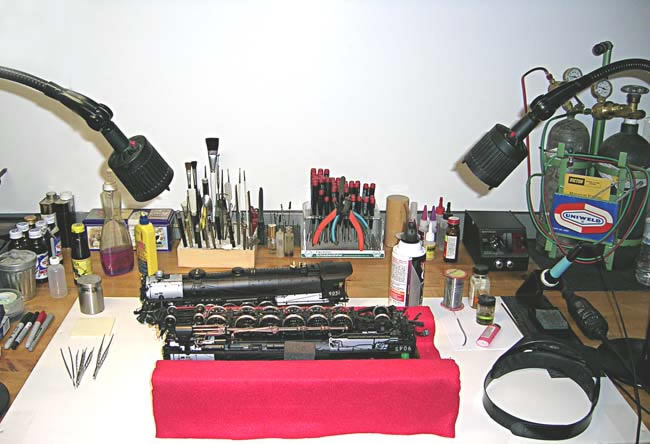 |
At the primary workstation each model under goes what is typically it's third complete inspection, there are at least two in Korea prior to shipping and once again upon arrival in our shop. Naturally a major portion of the effort is directed at ensuring that detail items are undamaged and that the overall paint on the model is also undamaged. Repair work when necessary is also performed at this station, you can see an assortment of hand tools (many purpose made), as well as a miniature oxy-acetylene rig, soldering iron station and a resistance soldering setup. |
![]()
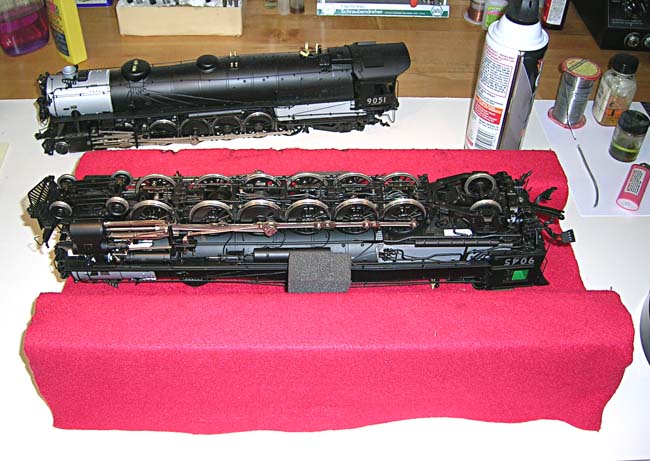 |
Also part of the pre-delivery inspection is to check for functional alignment of critical mechanical components. Even though each model is painstakingly packed for shipment from Korea, there is more than 7,500 miles of vibration endured by the models during their flight into Detroit. We attempt to check each and every accessible miniature fastener for tightness as they can loosen from the substantial vibration. The cosmetics are also inspected on the underside. There is certain 'tweaking' to be done with each and every project that is best done once the models arrive in our shop, it is sometimes difficult to explain the importance of the subtle touch often required. |
![]()
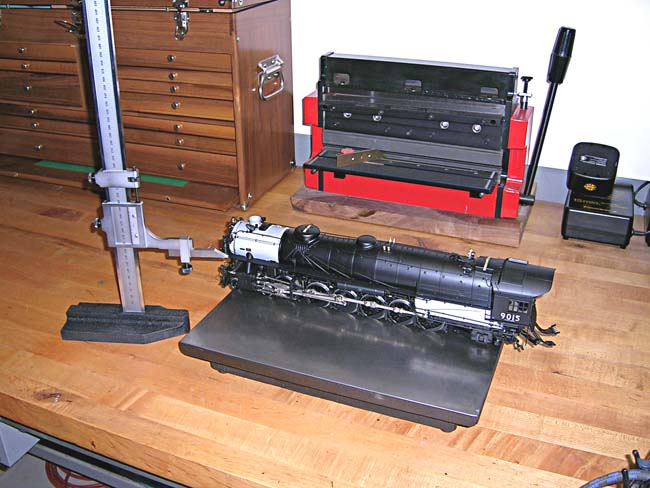 |
Once the initial visual inspection is complete, each model is placed on an extremely precise surface plate to check the suspension for correct alignment. With equalized suspension it is critical that every driver bearing box moves freely in the frame rails so that the suspension works effectively to distribute the locomotive weight evenly over all of the drivers just as with the prototype locos. There are adjustment points built into the suspension to allow for alignment corrections when necessary. |
![]()
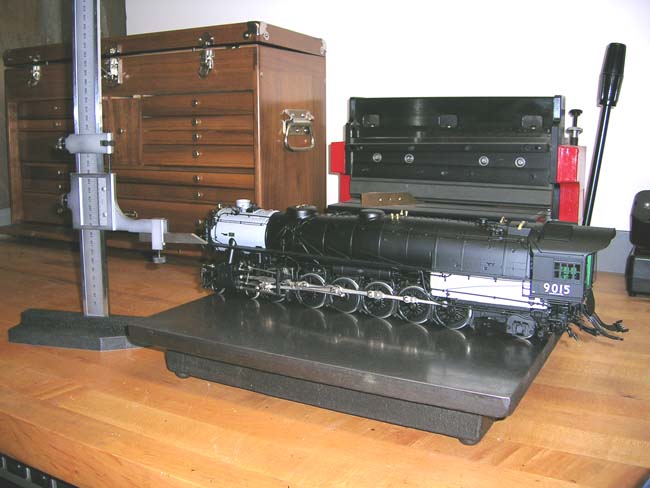 |
It is also critical that the model sit level on the rail heads so that the weight balance is correct for maximum tractive effort. Through considerable testing we have determined that the correct balance is far more important than over weighting our models to achieve the appropriate traction. It has been shown with actual track testing that are models are capable of pulling consists comparable to other models weighing nearly twice as much that are not equalized. The height gauge in the photo is used to check the 'ride height' from front to rear. |
![]()
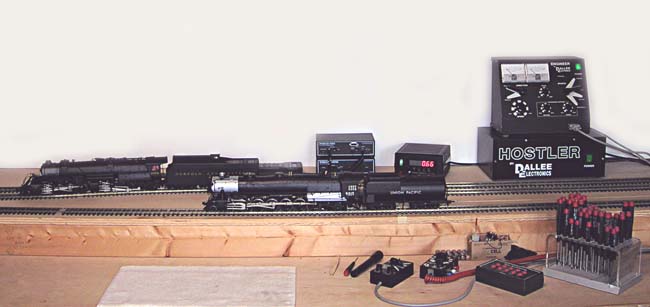 |
Next, we're on to track testing where we check the basic mechanical function of each model as well as the electronics; lighting, sound and valve-gear. The models are run on straight track and through demanding series of radii as well as a variety of turnouts. We first check for basic tracking ability, also for noise levels that may indicate potential problems either in the valve-gear or drive mechanism. |
![]()
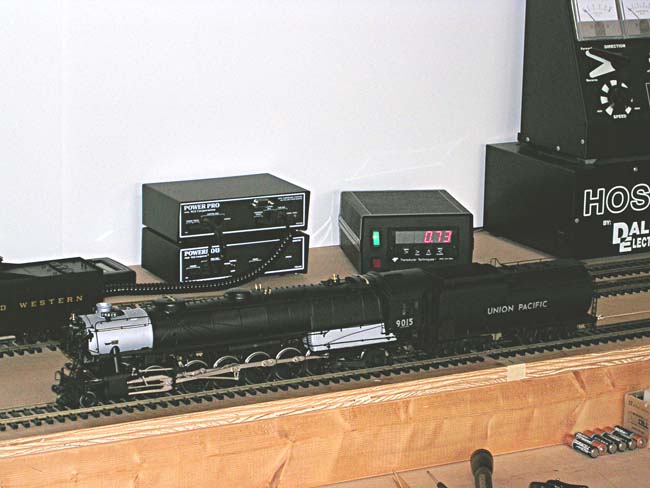 |
In addition to basic tracking ability, we check each model for scale speed performance. Through repetitive testing we have determined that if the model will achieve a minimum scale speed of 2.5MPH right out of the box, that once broken in it will achieve our target speed of 1.5-2.0MPH. It's easy to make a model run fast, the trick is to make it run fast quietly, we check for that as well. There's an old trick in the business that is still often used; to make a model run fast quietly, you use a higher drive ratio (less mechanical advantage), the down side is that you give up slow speed performance. |
![]()
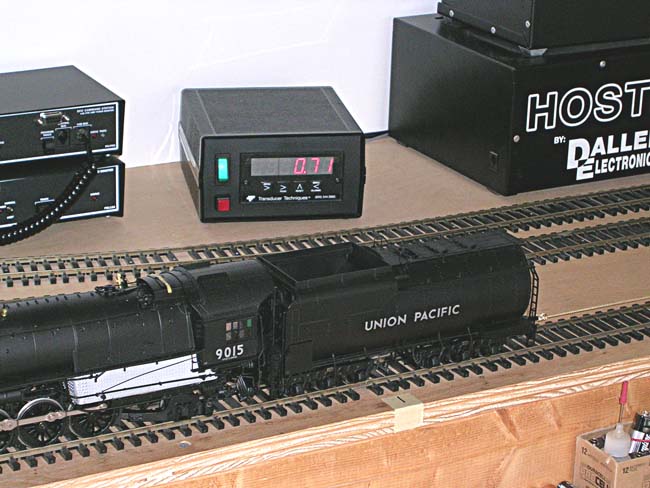 |
If you look next to the track near the tender in this photo you can see a timing mark that is used for the speed trials. The last performance test is actual measured pulling power. The digital readout in the background provides the results of the measured pull. The purpose built test unit allows us to use English as well as metric standards for our testing. |
![]()
Once the testing is accomplished there is again one last visual inspection prior to packing. The packing and shipment documentation takes up words of an hour and a half for each model and then we still have to get the packed model to the shipper. There are no shortcuts to achieve quality, it all boils down to commitment and time. We hope that this brief tour helps to explain the effort that goes into our models once the production is complete and the models are sitting in our shop prior to shipment to our clients. |
Copyright © 1997- 2024 Kohs & Company Inc, All Rights Reserved
SITE DIRECTORY